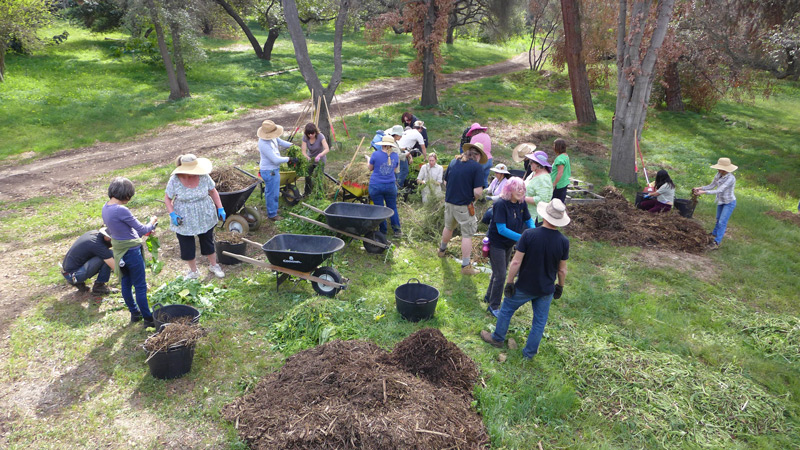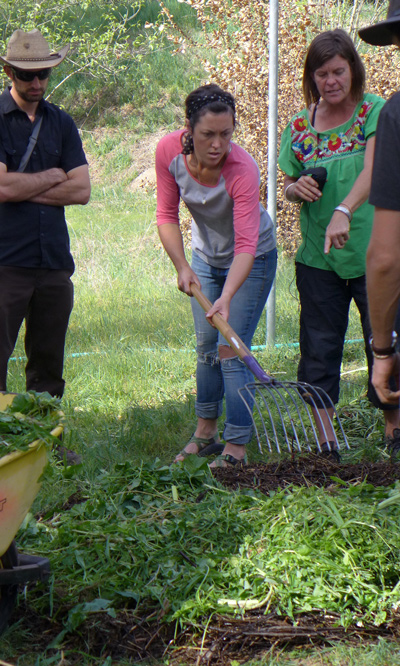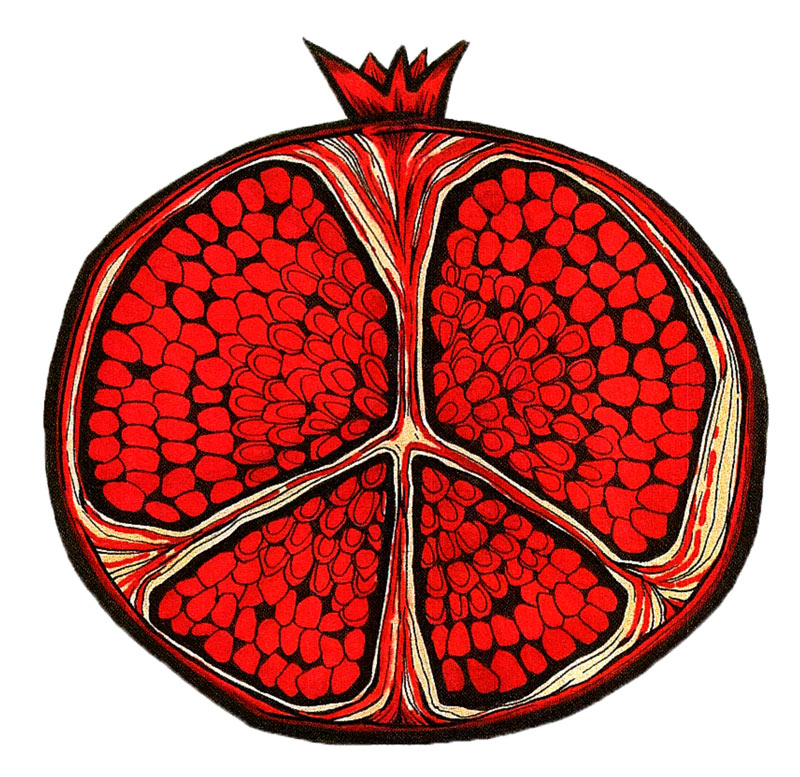The Huntington’s blog takes you behind the scenes for a scholarly view of the collections.
Thinking Outside the Bin
Posted on Tue., April 22, 2014 by

Garden educators took part in a series of agroecology workshops in the Huntington Ranch Garden in February, including a session on mesophilic and thermophilic composting. Photo by Kyra Saegusa.
Are visions of spring fertility dancing in your head but not in your garden? Could the magical process of composting bring new life to your soil and plants? Back in January and February I attended a professional development series at the Huntington Ranch and have been putting those lessons to good use. The sessions were part of a Train-the-Trainer program that brings in community leaders, educators, and professionals while using the Ranch Garden site as an agroecology resource. Participants included members from the Natural History Museum of Los Angeles County, Farmscape, The Garden School Foundation, and Master Gardeners from both the San Bernardino County and Los Angeles County programs.
You may be wondering, “What on earth is agroecology?” Well, it’s an ecosystem-based approach to gardening in which the systems that support the health of the garden are viewed as interconnected. So the soil, plants, insects, and wildlife (and people) all work together to create a mutually beneficial environment.

In a hands-on session in thermophilic composting, workshop participant Kathryn Kocarnik (with pitchfork) combines nitrogen-producing weeds and vegetable scraps with layers of carbon-rich decomposed green waste as presenter Nance Klehm (at right) offers instruction. Photo by Kyra Saegusa.
As a horticultural research intern for the Huntington Ranch, I attended one of the new workshops, “Mesophilic versus Thermophilic Composting,” which was held at the Ranch Garden site. I’m no composting neophyte, but like many of the participants, I had no idea what “mesophilic” and “thermophilic” meant in composting context. I knew that we need compost to add organic matter to poor soils and improve the living biology of the soil. But why couldn’t gardeners just buy compost at the garden store? Wasn’t it inconvenient to produce enough compost for your whole garden?
Instructor Nance Klehm would disagree. Something of a composting fanatic, Klehm is a Chicago-based horticultural consultant, ecological systems designer, and permaculture grower who works regularly in California and Arizona (Check out her website). Committed to the grassroots level (a little horticultural humor), she is working with state policy makers in Illinois to make large-scale community composting programs safe and legal. In addition to teaching the urban agroecology sessions in January, Klehm led many of the February professional development workshops, including my session. Her dynamic, scientific, integrative, and hands-on teaching style is based on a lifetime of experimenting and experience—a perfect fit for empowering urban gardeners of all levels.
During our class at the Ranch, she emphasized how important it was to make enough compost to improve the soil you already have, which means you won’t need to bring in scarce and valuable soil from other places. To support her message, Klehm showed us how to build two different compost piles: a hotter setting perfect for thermophilic bacteria and a cooler space suited for mesophilic bacteria.
The thermophilic pile was a space-friendly arrangement for amateurs. The round, above-ground pile looked like a layer cake, with alternating nitrogen and carbon layers. The nitrogen-producing materials included green weeds that we gathered and vegetable-based food scraps, while the carbon layers were Ranch green waste that had been drying and decomposing for months. Thermophilic bacteria live in temperatures from 131 to 140 degrees Fahrenheit, so these nitrogen and carbon layers provide a perfect environment for thermophilic bacteria to kill off pathogenic bacteria and fungi, harmful insect eggs, and coliform bacteria.
Next, we built the mesophilic pile. We dug a hole two feet deep, measuring about five feet by five feet. We used the same ingredients, just less green and food waste. An underground pile is a good fit for hot, dry Southern California: This type of pile stays cooler and moister and requires less maintenance (using a pitchfork or shovel, be sure to turn your hot pile once or twice after the temperature drops to mesothermic levels of 68–113 degrees Fahrenheit, which could take three–four weeks). Klehm explained that while mesophilic bacteria were fast decomposers, the combination of bacteria and a more diverse population of microbes creates a slower rate of decomposition. So if you’re not in a composting hurry, why not try mesophilic?
Now both of the piles need to progress to more stable lower temperatures, and then sit or “cure” for an important, final cooling-off stage. The whole composting process takes about three months for the hotter thermophilic pile and about five to six months for the cooler mesophilic pile.
There’s a saying that “compost happens,” but we gardeners can share information and simple strategies to help our home and community gardens spring to life.
The Huntington Ranch’s Urban Agroecology Intensive 2015 will be posting applications in November 2014.
Delia Hitz is the Huntington Ranch horticultural research intern.
